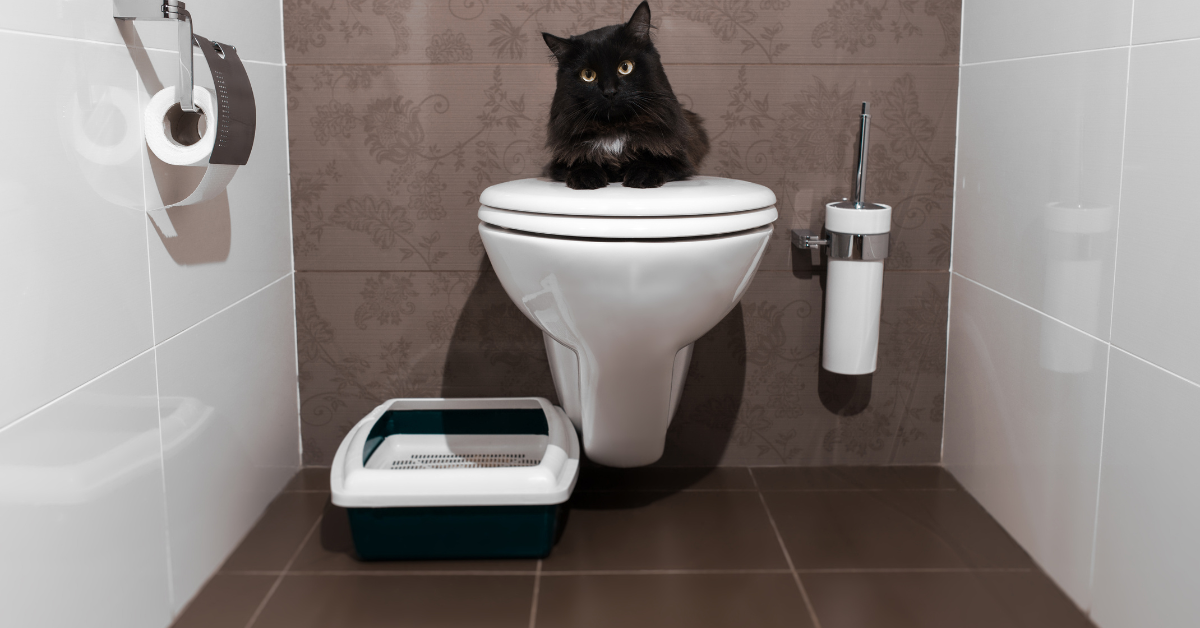Just about everyone is bound to have their own unique assumption on the subject of Don’t flush cat feces down the toilet.

Introduction
As feline owners, it's important to bear in mind exactly how we throw away our feline close friends' waste. While it might appear hassle-free to purge feline poop down the bathroom, this practice can have harmful consequences for both the setting and human wellness.
Ecological Impact
Flushing cat poop presents dangerous microorganisms and parasites right into the water system, positioning a significant threat to water ecosystems. These impurities can negatively influence marine life and concession water high quality.
Health Risks
In addition to ecological issues, purging feline waste can additionally position wellness risks to people. Pet cat feces may consist of Toxoplasma gondii, a parasite that can trigger toxoplasmosis-- a possibly extreme disease, specifically for pregnant women and individuals with damaged body immune systems.
Alternatives to Flushing
Fortunately, there are much safer and a lot more liable means to dispose of feline poop. Think about the complying with choices:
1. Scoop and Dispose in Trash
One of the most usual approach of disposing of cat poop is to scoop it right into an eco-friendly bag and throw it in the trash. Be sure to make use of a committed clutter inside story and take care of the waste without delay.
2. Use Biodegradable Litter
Opt for biodegradable pet cat trash made from materials such as corn or wheat. These litters are eco-friendly and can be safely dealt with in the trash.
3. Hide in the Yard
If you have a yard, consider hiding cat waste in a marked area far from vegetable yards and water sources. Make certain to dig deep sufficient to stop contamination of groundwater.
4. Set Up a Pet Waste Disposal System
Buy a family pet garbage disposal system particularly made for cat waste. These systems utilize enzymes to break down the waste, reducing odor and ecological influence.
Conclusion
Accountable pet dog ownership prolongs past giving food and shelter-- it also includes correct waste monitoring. By refraining from flushing cat poop down the bathroom and selecting alternate disposal approaches, we can decrease our ecological impact and secure human wellness.
Why Can’t I Flush Cat Poop?
It Spreads a Parasite
Cats are frequently infected with a parasite called toxoplasma gondii. The parasite causes an infection called toxoplasmosis. It is usually harmless to cats. The parasite only uses cat poop as a host for its eggs. Otherwise, the cat’s immune system usually keeps the infection at low enough levels to maintain its own health. But it does not stop the develop of eggs. These eggs are tiny and surprisingly tough. They may survive for a year before they begin to grow. But that’s the problem.
Our wastewater system is not designed to deal with toxoplasmosis eggs. Instead, most eggs will flush from your toilet into sewers and wastewater management plants. After the sewage is treated for many other harmful things in it, it is typically released into local rivers, lakes, or oceans. Here, the toxoplasmosis eggs can find new hosts, including starfish, crabs, otters, and many other wildlife. For many, this is a significant risk to their health. Toxoplasmosis can also end up infecting water sources that are important for agriculture, which means our deer, pigs, and sheep can get infected too.
Is There Risk to Humans?
There can be a risk to human life from flushing cat poop down the toilet. If you do so, the parasites from your cat’s poop can end up in shellfish, game animals, or livestock. If this meat is then served raw or undercooked, the people who eat it can get sick.
In fact, according to the CDC, 40 million people in the United States are infected with toxoplasma gondii. They get it from exposure to infected seafood, or from some kind of cat poop contamination, like drinking from a stream that is contaminated or touching anything that has come into contact with cat poop. That includes just cleaning a cat litter box.
Most people who get infected with these parasites will not develop any symptoms. However, for pregnant women or for those with compromised immune systems, the parasite can cause severe health problems.
How to Handle Cat Poop
The best way to handle cat poop is actually to clean the box more often. The eggs that the parasite sheds will not become active until one to five days after the cat poops. That means that if you clean daily, you’re much less likely to come into direct contact with infectious eggs.
That said, always dispose of cat poop in the garbage and not down the toilet. Wash your hands before and after you clean the litter box, and bring the bag of poop right outside to your garbage bins.
https://trenchlesssolutionsusa.com/why-cant-i-flush-cat-poop/

I'm very focused on Can You Flush Cat Poo or Litter Down the Toilet? and I'm hoping you enjoyed our article. Sharing is nice. One never knows, you may be doing someone a favor. We thank you for reading our article about Don’t flush cat feces down the toilet.
Suggested Site
Comments on “The Risks of Flushing Cat Poop in Your Toilet - Precautionary Measures”